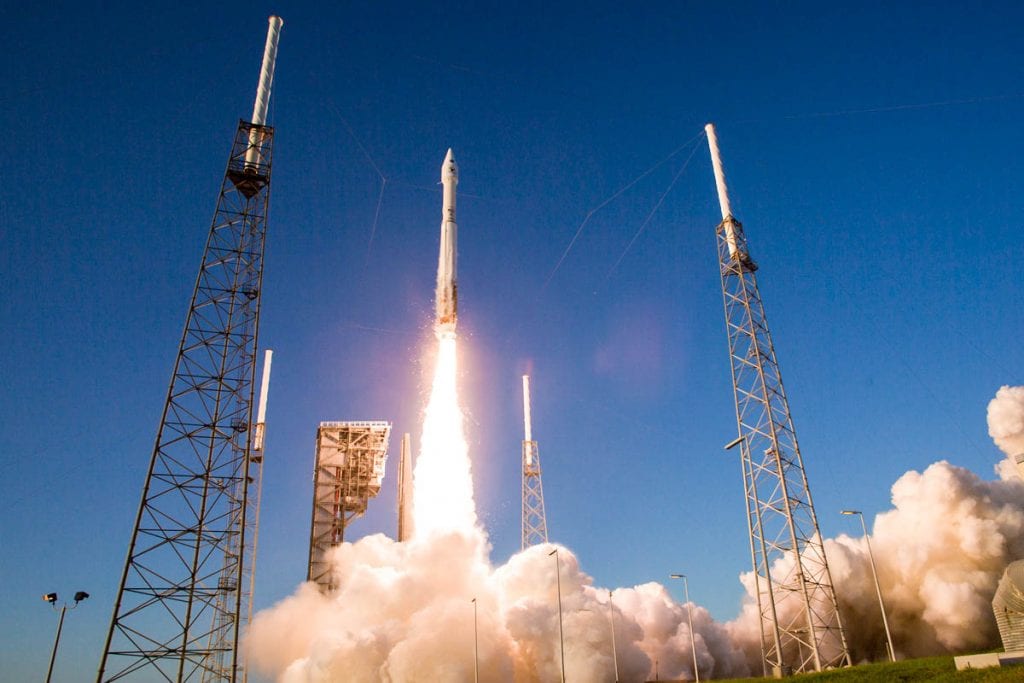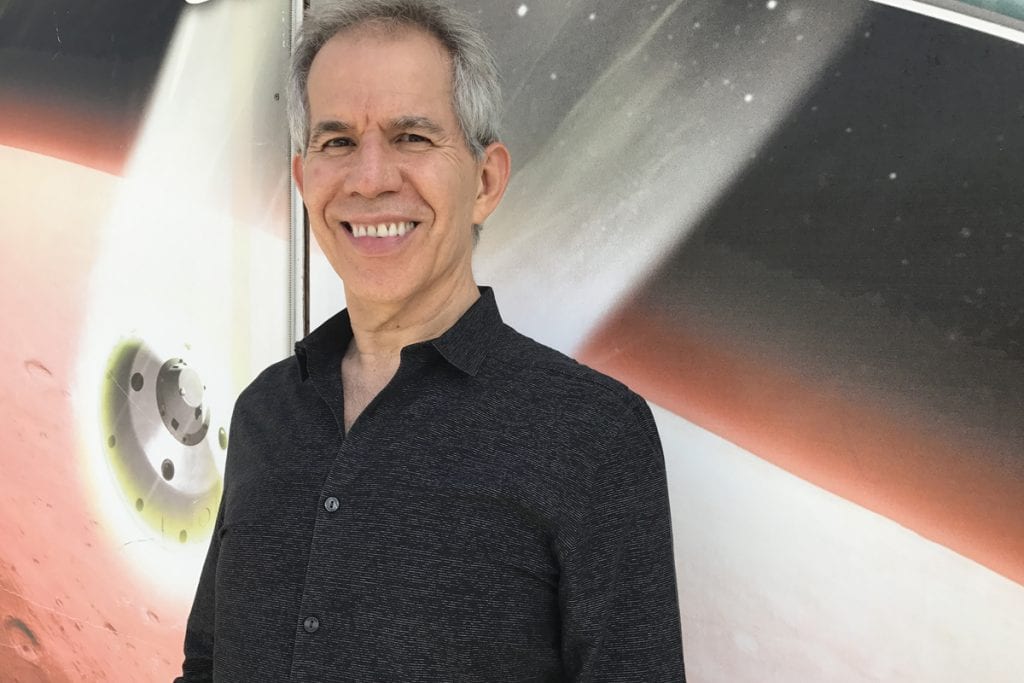Asteroid Bennu Gives NASA’s OSIRIS-REx Mission Team Lots of Surprises

The United Launch Alliance Atlas V rocket carrying NASA’s Origins, Spectral Interpretation, Resource Identification, Security-Regolith Explorer (OSIRIS-REx) spacecraft lifts off on from Space Launch Complex 41 on Thursday, Sept. 8, 2016 at Cape Canaveral Air Force Station in Florida. OSIRIS-REx will be the first U.S. mission to sample an asteroid, retrieve at least two ounces of surface material and return it to Earth for study. The asteroid, Bennu, may hold clues to the origin of the solar system and the source of water and organic molecules found on Earth. Photo Credit: (NASA/Joel Kowsky)
BY ZENAIDA GONZALEZ KOTALA
Sometimes the unexpected is more exciting than finding exactly what you thought you’d find, and this is indeed the case for the science team involved in NASA’s OSIRIS-REx asteroid-sample mission.
This mission, a first for the United States, aims to collect a sample from the near-Earth asteroid 101955 Bennu and bring it back to Earth in 2023. The spacecraft left Kennedy Space Center in September 2016 and arrived at Bennu in December 2018.
UCF physics Professor Humberto Campins, one of the co-investigators on the mission, could barely contain his excitement about the discoveries.
“It is so much more than we were expecting,” he says from his campus office in Orlando. “We’ve been reviewing images and other data for months and many things we expected, including the overall shape, were right on. But there are all sorts of surprises from a very complex topography to the composition of the surface. We are refining our encounter plans because this asteroid is so interesting.”
The team, led by University of Arizona Professor Dante Lauretta, shared some of the mission’s findings today at the 50th Lunar and Planetary Science Conference in Houston. The team, which includes dozens of scientists from across the nation and the world, also reported some of its preliminary findings in Nature and Nature Astronomy, which published several articles today. Lauretta had another surprise for those attending the conference: He announced that Bennu is ejecting particles into space.
That discovery was made shortly after the spacecraft established orbit around Bennu. A navigation camera on the spacecraft captured an image that showed particles off the surface of the asteroid. The team readjusted the array of science and navigation instruments onboard to get a better look, Campins says.
“It means this is an active asteroid instead of an inert body,” Campins says. “We do not know yet how the particles are being released from the surface, but they pose a whole new set of questions. This is what science is about – inquiry and discovery. It is the most exciting time of my career.”

Physics Professor Humberto Campins
The team determined the stream of particles did not pose a hazard to the spacecraft. But between the mysterious particles and the unexpected terrain on the surface of Bennu, plans for retrieving the sample are being adapted.
“On the basis of our pre-encounter knowledge, we developed a sampling strategy to target 50-metre-diameter patches of loose regolith with grain sizes smaller than two centimetres,” the team wrote in one of the Nature papers published today. “We observe only a small number of apparently hazard-free regions, of the order of 5 to 20 metres in extent, the sampling of which poses a substantial challenge.”
But the instruments aboard the spacecraft are sophisticated and the assembled team has expertise. They expect to fulfill the mission, but they say it’s just going to be a little more complicated.
For Campins, the unexpected is a particularly good opportunity. He has been researching “active asteroids” for years and is eager to see what the close-up studies of Bennu will reveal.
The Japanese space agency launched its own mission, Hayabusa2, to retrieve a sample from another asteroid, Ryugu. Their spacecraft collected a sample Feb. 22 and released video of the maneuver. The Hayabusa2 mission is scheduled to return to Earth in 2020. The findings of the operation have been of interest to the OSIRIS-REx team and vice versa. There is considerable cooperation between these two missions, Campins says.
The OSIRIS-REx team is working diligently to select a suitable site on Bennu’s surface for sampling. The retrieval of the sample is expected to be executed during a touch-and-go maneuver in 2020.
The OSIRIS-REx mission seeks to answer fundamental and practical questions. Bennu was selected because data from Earth, including some collected by the NSF-funded and UCF-managed Arecibo Observatory in Puerto Rico. These data indicated Bennu is a carbonaceous asteroid that may contain material from the earliest history of our solar system. The asteroid is expected to contain the molecular precursors to the origin of life and the Earth’s oceans. It is also an asteroid that could potentially impact Earth sometime next century. Learning about its composition would be critical in developing any plan to prevent an impact, according to the mission website.
“It’s exhilarating. I can’t wait to see what else we will discover as we make more detailed maps and begin piecing together what it all means,” says Campins, who is an international expert on asteroids. “This is what research is about.”
